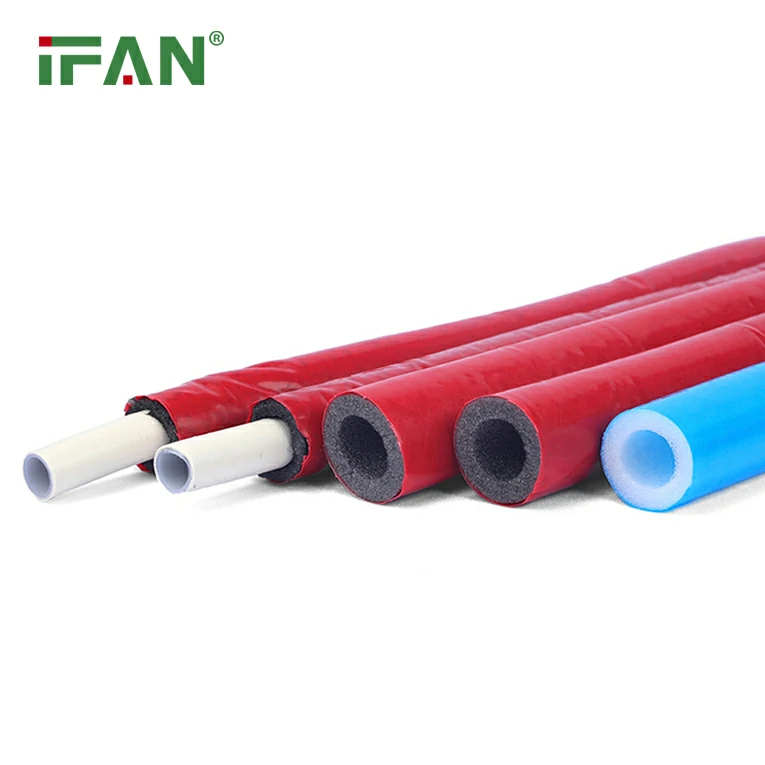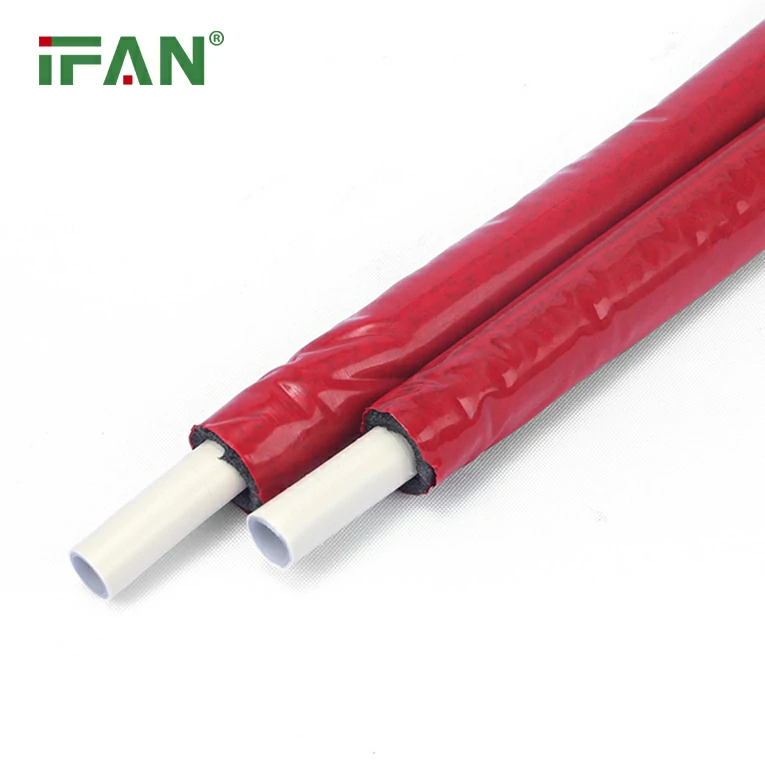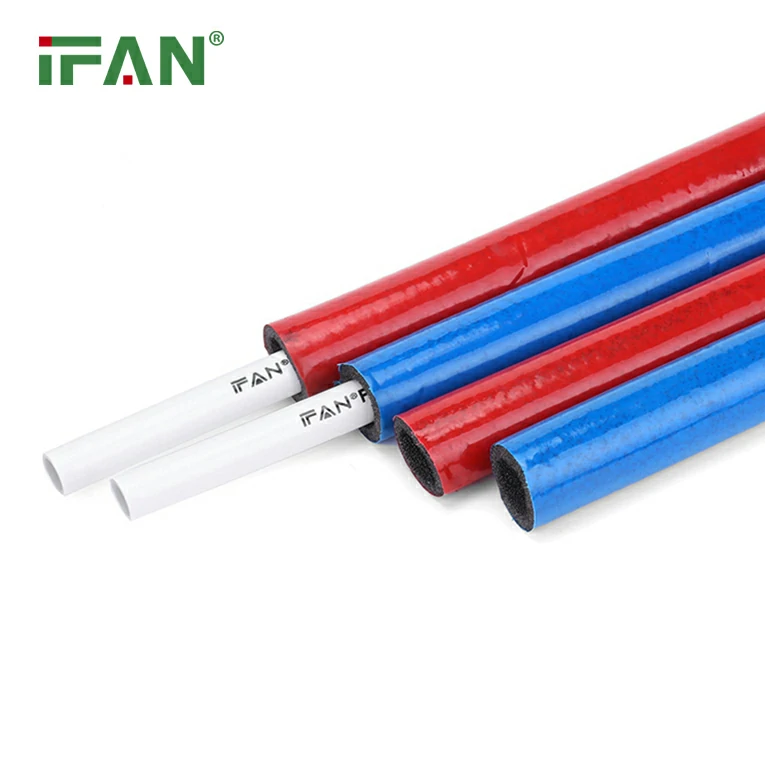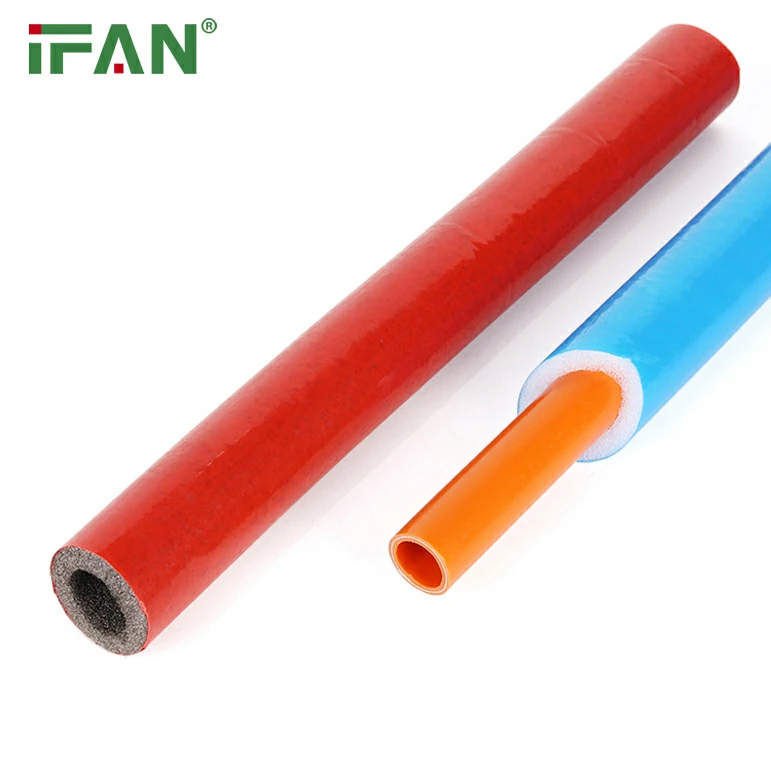IFAN factory 30+ years manufacture experience support color /size customization support free sample.Welcome to consult for catalog and free samples.This is our Facebook Website:www.facebook.com,Click to watch IFAN’s product video.Compared with Tomex products, our IFAN products from quality to price are your best choice, welcome to buy!
Polypropylene Random Copolymer (PPR) fittings have become a popular choice in plumbing systems due to their excellent durability, resistance to corrosion, and ease of installation. These fittings are typically used in cold and hot water supply systems, as well as heating systems. Understanding the different types of PPR fittings and their applications can help you choose the right fittings for your plumbing projects. In this article, we will explore the various types of PPR fittings, their uses, and key considerations when selecting them.
What Are PPR Fittings?
PPR fittings are made from Polypropylene Random Copolymer, a high-quality thermoplastic known for its superior strength, chemical resistance, and heat tolerance. These fittings are commonly used to connect PPR pipes in plumbing systems that handle hot and cold water, as well as heating systems. Due to their high resistance to corrosion and scale buildup, PPR fittings are ideal for long-lasting and low-maintenance plumbing applications.
Types of PPR Fittings
PPR fittings come in a variety of shapes, sizes, and connection types to meet the needs of different plumbing systems. Below, we will explore the most common types of PPR fittings and their typical uses.
1. Elbow Fittings
Elbow fittings are used to change the direction of the pipe. They come in various angles, including 45° and 90°, and allow the pipes to turn around corners. Elbow fittings are commonly used in both residential and commercial plumbing systems.
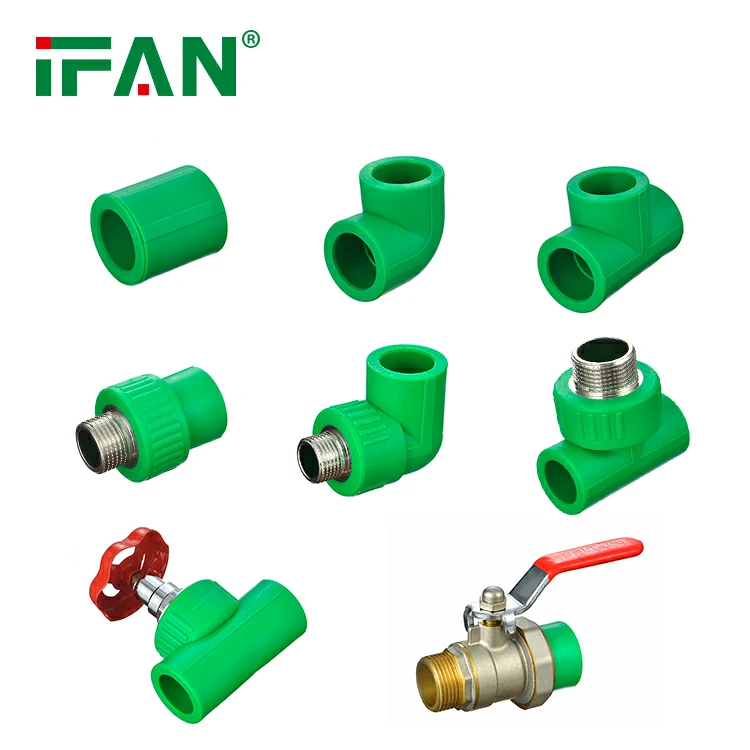
Applications:
- Used to redirect water flow in tight spaces.
- Essential for creating turns in pipelines without compromising flow efficiency.
- Ideal for systems with intricate layouts.
Tip: When selecting elbow fittings, make sure to choose the appropriate angle to ensure a smooth flow of water and to prevent unnecessary pressure drop in the system.
2. Tee Fittings
Tee fittings are used to join three sections of pipe together. The fitting has a “T” shape, with two inputs and one output or vice versa. This type of fitting is often used for branching off from a main pipeline to another pipe or fixture.
Applications:
- Branching out to add additional fixtures, such as faucets or showerheads.
- Splitting the water flow from one pipe into two separate directions.
- Ideal for applications that require multiple points of water supply from a single pipeline.
Tip: When installing tee fittings, ensure that the branch and the main pipeline are of compatible sizes to maintain the system’s flow and pressure.
3. Couplings
Couplings are used to connect two pieces of PPR pipe in a straight line. These fittings help extend the length of the pipe system and are ideal for connecting two pipes that are the same size. Couplings are easy to install and are commonly used for repairing or extending pipelines.
Applications:
- Connecting two pipes of the same diameter in plumbing systems.
- Useful in repairs when a pipe has been damaged or needs replacement.
- Commonly used in both hot and cold water applications.
Tip: Always make sure the pipes are properly aligned before securing the coupling to ensure a leak-free connection.
4. Reducer Fittings
Reducer fittings are used when connecting two pipes of different diameters. A reducer fitting smoothly transitions the flow from one pipe size to another, which is essential when integrating pipes of varying dimensions in a plumbing system.
Applications:
- Reducing or enlarging the size of a pipe in specific sections of the system.
- Used in water supply systems where different pipe sizes are required.
- Helps in systems with varying pressure demands or flow rates.
Tip: Be sure to choose the correct size reducer to maintain the efficiency of your plumbing system and avoid creating bottlenecks in water flow.
5. Union Fittings
Union fittings are similar to couplings but are designed to be disassembled without cutting the pipes. Unions are ideal when frequent maintenance or modifications are required. These fittings consist of three parts: a nut, a male end, and a female end, and they provide a secure connection while allowing easy disassembly.
Applications:
- Ideal for systems where frequent maintenance or adjustments are necessary.
- Commonly used in industrial settings where modifications are frequent.
- Provides a removable connection for parts that may need to be replaced over time.
Tip: Ensure that the union fitting is properly tightened during installation to prevent leakage, as loose fittings can cause system inefficiency.
6. End Caps
End caps are used to seal the ends of PPR pipes in plumbing systems. These fittings are essential for closing off unused or open ends of the pipe, preventing any potential leaks or contamination.
Applications:
- Used in systems where a section of the pipeline needs to be closed off temporarily or permanently.
- Ideal for installations where the pipeline is being left unused.
- Helps to prevent contamination or water loss from open pipe ends.
Tip: Make sure to securely attach the end cap to avoid leakage at the closed end of the pipeline.
7. Ball Valves
Ball valves are used to control the flow of water through a pipeline. These valves have a spherical ball inside them with a hole that can be rotated to allow or restrict the flow. Ball valves are known for their durability and ability to provide precise control over water flow.
Applications:
- Controlling water flow in both residential and commercial plumbing systems.
- Ideal for installations where on/off flow control is needed.
- Used in irrigation, heating systems, and main water supply lines.
Tip: Always ensure that the valve is fully opened or closed to avoid water pressure issues in your system.
8. Flange Fittings
Flange fittings are used for connecting PPR pipes to other components such as pumps or tanks. These fittings are equipped with a flat surface that can be bolted onto the corresponding part of the plumbing system. Flange fittings provide a strong and durable connection.
Applications:
- Used in high-pressure systems where a robust connection is needed.
- Commonly used in industrial and commercial plumbing systems.
- Provides secure, leak-free connections for pumps, tanks, and other equipment.
Tip: When installing flange fittings, ensure that the gasket or sealing ring is properly placed to prevent leaks.
Conclusion
Choosing the right PPR fittings is essential for the successful installation and long-term performance of a plumbing system. Whether you’re working with elbows, tees, reducers, or other fittings, understanding their applications can help you design a plumbing system that is efficient and reliable. By selecting high-quality PPR fittings and ensuring proper installation, you can enjoy a durable and low-maintenance plumbing system that will last for many years.
FAQ
1. What are the main benefits of using PPR fittings?
PPR fittings are durable, corrosion-resistant, and easy to install. They also provide a long lifespan and are resistant to scale buildup, making them ideal for both hot and cold water plumbing systems.
2. How do I install PPR fittings?
PPR fittings can be installed using heat fusion, which involves melting the ends of the pipe and fitting to create a secure, leak-proof bond. Alternatively, some fittings come with threaded or push-fit connections.
3. Can PPR fittings be used for both hot and cold water systems?
Yes, PPR fittings are suitable for both hot and cold water systems. They can withstand high temperatures and are resistant to damage from heat.
4. How long do PPR fittings last?
With proper installation and maintenance, PPR fittings can last for 50 years or more, making them a reliable choice for long-term plumbing systems.
5. Are PPR fittings resistant to chemicals?
Yes, PPR fittings are resistant to a wide range of chemicals, which makes them suitable for industrial applications where corrosive substances are present. However, always check the compatibility with specific chemicals.

